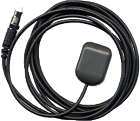 Micro Mouse
Micro GPS Antenna
Micro-Mouse is the most compact GPS antenna available on the current market. Its state-of-the-art technology allows for its micro size, making it ideal when space and weight are important. With good coverage almost all the way to the horizon, it performs excellently in foliage or urban canyon environment-even in the presence of electromagnetic interference! Featuring diminutive and rugged enclosure and unparalleled performance, Micro-Mouse is compatible with almost every GPS receiver model on the markets and provides an excellent alternative for a vast range of GPS applications including AVL, Vehicle Navigation, Aviation, and Military.
Advantages
24dB gain active GPS antenna
max of 12mA current consumption
Input range: 2.5 VDC to 5.5 VDC
30 grams (less cable & connector)
-30 to +85° C operating range, Fully waterproof
Choice one for the following connectors:
SMA, SMB, BNC, MCX, TNC or NTYPE
Right-angle connector available
Micro Mouse
Micro GPS Antenna
Micro-Mouse is the most compact GPS antenna available on the current market. Its state-of-the-art technology allows for its micro size, making it ideal when space and weight are important. With good coverage almost all the way to the horizon, it performs excellently in foliage or urban canyon environment-even in the presence of electromagnetic interference! Featuring diminutive and rugged enclosure and unparalleled performance, Micro-Mouse is compatible with almost every GPS receiver model on the markets and provides an excellent alternative for a vast range of GPS applications including AVL, Vehicle Navigation, Aviation, and Military.
Advantages
24dB gain active GPS antenna
max of 12mA current consumption
Input range: 2.5 VDC to 5.5 VDC
30 grams (less cable & connector)
-30 to +85° C operating range, Fully waterproof
Choice one for the following connectors:
SMA, SMB, BNC, MCX, TNC or NTYPE
Right-angle connector available
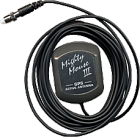 Mighty Mouse III
Small GPS Antenna
The MM3-GPS is a small 26dB gain active GPS antenna with an input range of 2.5V to 5.5V DC and maximum consumption of 6mA. Common features to its predecessors, the Mighty Mouse and Mighty Mouse II include a 5m cable, combination magnetic mount or screw-plate mounting and universal FME connector allowing the easy swapping out of connectors (SMA, SMB, BNC, MCX, TNC, or N-Type) to suit the application.
Advantages
26dB gain active GPS antenna
max of 6mA current consumption
Input range: 2.5 VDC to 5.5 VDC
3 stage amplifier and band pass filtering
Extreme low power
Magnetic or screw-plate mounting
-40 to +85° C operating range, Fully waterproof
Choice one for the following connectors:
SMA, SMB, BNC, MCX, TNC or NTYPE
Right-angle connector available
Mighty Mouse III
Small GPS Antenna
The MM3-GPS is a small 26dB gain active GPS antenna with an input range of 2.5V to 5.5V DC and maximum consumption of 6mA. Common features to its predecessors, the Mighty Mouse and Mighty Mouse II include a 5m cable, combination magnetic mount or screw-plate mounting and universal FME connector allowing the easy swapping out of connectors (SMA, SMB, BNC, MCX, TNC, or N-Type) to suit the application.
Advantages
26dB gain active GPS antenna
max of 6mA current consumption
Input range: 2.5 VDC to 5.5 VDC
3 stage amplifier and band pass filtering
Extreme low power
Magnetic or screw-plate mounting
-40 to +85° C operating range, Fully waterproof
Choice one for the following connectors:
SMA, SMB, BNC, MCX, TNC or NTYPE
Right-angle connector available
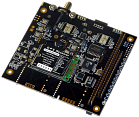 FlexCom104-GPS
PC/104 GPS & Com Module
The FlexCom104-GPS is a PC104 GPS and flexible communications module that provides a complete I/O solution for applications requiring GPS, serial, and wireless or wired communication. It features support for up to two Multitech Universal Socket compatible devices including GSM/GPRS, WiFi®, and Bluetooth®, a 16-channel ANTARIS 4 GPS receiver, and an RS-232 serial port. I/O addresses and IRQ are selectable and the module has an operating temperature of −20° to +60°C.
As with all Tri-M products, the FlexCom104-GPS, is engineered for rugged environments. A soldered-on GPS receiver and RS-232 port isolation are some of the design elements that make this solution right for harsh environments where exposure to dust, airborne particles, shock, and vibration can take a toll on embedded systems.
For applications where you need location information, as well as wired and wireless communications, the FlexCom104-GPS is a product that will meet your needs.
Advantages
Supports up to two 5V Multi-Tech SocketModem
16-Channel ANTARIS 4 GPS
One RS-232 serial Port
Selectable I/O Address and IRQ
Operating temperature: −20°C to +60°C
PC/104 Compliant
RoHS Compliant
FlexCom104-GPS
PC/104 GPS & Com Module
The FlexCom104-GPS is a PC104 GPS and flexible communications module that provides a complete I/O solution for applications requiring GPS, serial, and wireless or wired communication. It features support for up to two Multitech Universal Socket compatible devices including GSM/GPRS, WiFi®, and Bluetooth®, a 16-channel ANTARIS 4 GPS receiver, and an RS-232 serial port. I/O addresses and IRQ are selectable and the module has an operating temperature of −20° to +60°C.
As with all Tri-M products, the FlexCom104-GPS, is engineered for rugged environments. A soldered-on GPS receiver and RS-232 port isolation are some of the design elements that make this solution right for harsh environments where exposure to dust, airborne particles, shock, and vibration can take a toll on embedded systems.
For applications where you need location information, as well as wired and wireless communications, the FlexCom104-GPS is a product that will meet your needs.
Advantages
Supports up to two 5V Multi-Tech SocketModem
16-Channel ANTARIS 4 GPS
One RS-232 serial Port
Selectable I/O Address and IRQ
Operating temperature: −20°C to +60°C
PC/104 Compliant
RoHS Compliant
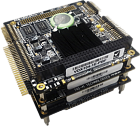 HECS1000
Hostile Environment Controller Solution
The HECS is a durable robust processor system ideal for data applications and concentration. This low power system solution leverages over 20 years of Tri-M’s experience building and supplying PC/104 solutions. Heavy duty and rugged to sustain shock, vibration and temperature the HECS is designed to meet your industrial needs.
Accessories & Options
MIL-STD-1275 power supply
UPS
Linux O/S
GPS
WiFi
Enclosure
Custom end caps
Custom Connectors
HECS1000
Hostile Environment Controller Solution
The HECS is a durable robust processor system ideal for data applications and concentration. This low power system solution leverages over 20 years of Tri-M’s experience building and supplying PC/104 solutions. Heavy duty and rugged to sustain shock, vibration and temperature the HECS is designed to meet your industrial needs.
Accessories & Options
MIL-STD-1275 power supply
UPS
Linux O/S
GPS
WiFi
Enclosure
Custom end caps
Custom Connectors
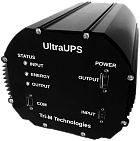 UltraUPS
Uninterruptible Power Solutions for Hostile Environments
The ultraUPS are a series of backup power solutions for rugged and hostile environments where down time for servicing and power outages is unacceptable or uneconomical.
All the ultraUPS units operate down to −40°C and the ultra capacitor units up to +85°C. The Li-Ion ultraUPS units have an operating temperature range of −40°C to +70°C and backup energy of 2.2 megajoules (617 watt-hours). That’s enough energy to keep Tri-M’s VDX104 running for over two weeks! The ultra capacitor units have an operating temperature range of −40°C to +85°C with backup energy up to 15 kilojoules (4.2 watt-hours).
The 6 amp output of the ultraUPS units can be field adjusted programmed between 5V and 16V. The main input of the ultraUPS protects against vehicle «load dumps» and transients and is designed to MIL‑STD‑1275 requirements. The ultraUPS units also supports power direct from 15V or 30V solar panels.
Advantages
The rugged aluminum enclosure is equipped with an anti-shock pad
RS232 communication port for monitoring and control
Power good signal, remote on/off control line and a 5V standby power
Supports 15V and 30V solar panels for main power supply
Programmable 6 amp output voltage between 5V to 16V
Operating Temperature Range −40°C to +85°C (capUPS models)
Operating Temperature Range −40°C to +70°C (Li-Ion model)
Three LEDs provide status of input power, backup energy and output
Load dump and transient protected
UltraUPS
Uninterruptible Power Solutions for Hostile Environments
The ultraUPS are a series of backup power solutions for rugged and hostile environments where down time for servicing and power outages is unacceptable or uneconomical.
All the ultraUPS units operate down to −40°C and the ultra capacitor units up to +85°C. The Li-Ion ultraUPS units have an operating temperature range of −40°C to +70°C and backup energy of 2.2 megajoules (617 watt-hours). That’s enough energy to keep Tri-M’s VDX104 running for over two weeks! The ultra capacitor units have an operating temperature range of −40°C to +85°C with backup energy up to 15 kilojoules (4.2 watt-hours).
The 6 amp output of the ultraUPS units can be field adjusted programmed between 5V and 16V. The main input of the ultraUPS protects against vehicle «load dumps» and transients and is designed to MIL‑STD‑1275 requirements. The ultraUPS units also supports power direct from 15V or 30V solar panels.
Advantages
The rugged aluminum enclosure is equipped with an anti-shock pad
RS232 communication port for monitoring and control
Power good signal, remote on/off control line and a 5V standby power
Supports 15V and 30V solar panels for main power supply
Programmable 6 amp output voltage between 5V to 16V
Operating Temperature Range −40°C to +85°C (capUPS models)
Operating Temperature Range −40°C to +70°C (Li-Ion model)
Three LEDs provide status of input power, backup energy and output
Load dump and transient protected
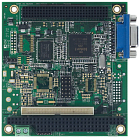 VSX-2812S
PC/104+ VGA/LCD Module
VSX-2812S PC/104-Plus VGA/LCD Module. Features Volari Z9s Chipset, onboard 32MB VGA Memory. Supports VGA, Flat Panel Display. PC/104+ standard compliant.
VSX-2812S
PC/104+ VGA/LCD Module
VSX-2812S PC/104-Plus VGA/LCD Module. Features Volari Z9s Chipset, onboard 32MB VGA Memory. Supports VGA, Flat Panel Display. PC/104+ standard compliant.
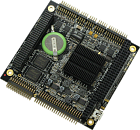 VDX104+
800MHz Vortex86DX SoC
The VDX104+ is a rugged PC/104+ compliant system controller measuring just 3.55 inches by 3.775 inches. With an 800 MHz processor, the VDX104+ offers the quickest route of integrating a full x86 AT-compatible computer into your embedded control application using the PC/104+ form factor.
In addition, the built-in peripherals such as dual ethernet minimize the number of additional modules required. By combining the system hardware with extended temperature operation and onboard soldered 512 MB SDRAM, I/O, software (integrated OS image) and solid-state mass storage, the VDX104+ lowers your exposure to possible development risks, costs and significantly reduces your time-to-market.
The VDX104+'s full compatibility with the popular PC/104+ embedded expansion bus allows you to easily integrate the widest selection of low-cost hardware peripherals. The numerous features provide an ideal price/performance solution.
VDX104+
800MHz Vortex86DX SoC
The VDX104+ is a rugged PC/104+ compliant system controller measuring just 3.55 inches by 3.775 inches. With an 800 MHz processor, the VDX104+ offers the quickest route of integrating a full x86 AT-compatible computer into your embedded control application using the PC/104+ form factor.
In addition, the built-in peripherals such as dual ethernet minimize the number of additional modules required. By combining the system hardware with extended temperature operation and onboard soldered 512 MB SDRAM, I/O, software (integrated OS image) and solid-state mass storage, the VDX104+ lowers your exposure to possible development risks, costs and significantly reduces your time-to-market.
The VDX104+'s full compatibility with the popular PC/104+ embedded expansion bus allows you to easily integrate the widest selection of low-cost hardware peripherals. The numerous features provide an ideal price/performance solution.
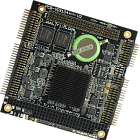 VDX104
800MHz Vortex86DX SoC
The VDX104 is a rugged PC/104 compliant system controller measuring just 3.55 inches by 3.775 inches. With an 800 MHz processor, the VDX104 offers the quickest route of integrating a full x86 AT-compatible computer into your embedded control application using the PC/104 form factor.
In addition, the built-in peripherals such as ethernet minimize the number of additional modules required. By combining the system hardware with extended temperature operation and onboard soldered 512 MB SDRAM, I/O, software (integrated OS image) and solid-state mass storage, the VDX104 lowers your exposure to possible development risks, costs and significantly reduces your time-to-market.
The VDX104’s full compatibility with the popular PC/104 embedded expansion bus allows you to easily integrate the widest selection of low-cost hardware peripherals. The numerous features provide an ideal price/performance solution.
VDX104
800MHz Vortex86DX SoC
The VDX104 is a rugged PC/104 compliant system controller measuring just 3.55 inches by 3.775 inches. With an 800 MHz processor, the VDX104 offers the quickest route of integrating a full x86 AT-compatible computer into your embedded control application using the PC/104 form factor.
In addition, the built-in peripherals such as ethernet minimize the number of additional modules required. By combining the system hardware with extended temperature operation and onboard soldered 512 MB SDRAM, I/O, software (integrated OS image) and solid-state mass storage, the VDX104 lowers your exposure to possible development risks, costs and significantly reduces your time-to-market.
The VDX104’s full compatibility with the popular PC/104 embedded expansion bus allows you to easily integrate the widest selection of low-cost hardware peripherals. The numerous features provide an ideal price/performance solution.
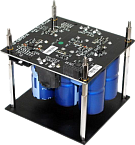 CBP Modules
Backup Power for Harsh and Remote Environments
Tri-M CBP Modules are maintenance free, high cycling backup power systems designed for embedded applications that may encounter extreme temperatures or require numerous charge cycles. Many of these applications are found in remote locations where access to the systems is expensive or challenging (think undersea or remote geographies).
CBP Modules are based on a PC/104 form factor and use electric double-layer capacitors (EDLC) or ultra-capacitors rather than conventional batteries. Ultra-capacitors have a high power density compared to conventional electrolytic capacitors so they can charge very quickly and are able to be recharged thousands of times. This is beneficial for applications that have either a large number of battery discharge cycles or where a «maintenance free» solution is required such as remote terminals or mobile data collectors.
When mated with a Tri-M power solution (HESC or HPSC), the complete system will provide proven, battery free, long-life uninterruptible power for embedded applications. The CBP Modules are offered in Farad capacities of 10, 23, 25, 58, 250, and 500 providing estimated backup power run-times of 45 seconds to 45 minutes based on a twenty watt load.
CBP Modules
Backup Power for Harsh and Remote Environments
Tri-M CBP Modules are maintenance free, high cycling backup power systems designed for embedded applications that may encounter extreme temperatures or require numerous charge cycles. Many of these applications are found in remote locations where access to the systems is expensive or challenging (think undersea or remote geographies).
CBP Modules are based on a PC/104 form factor and use electric double-layer capacitors (EDLC) or ultra-capacitors rather than conventional batteries. Ultra-capacitors have a high power density compared to conventional electrolytic capacitors so they can charge very quickly and are able to be recharged thousands of times. This is beneficial for applications that have either a large number of battery discharge cycles or where a «maintenance free» solution is required such as remote terminals or mobile data collectors.
When mated with a Tri-M power solution (HESC or HPSC), the complete system will provide proven, battery free, long-life uninterruptible power for embedded applications. The CBP Modules are offered in Farad capacities of 10, 23, 25, 58, 250, and 500 providing estimated backup power run-times of 45 seconds to 45 minutes based on a twenty watt load.
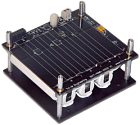 BAT-NiMh45
4.5Ah NiMh Backup Module
The BAT-NiMh45 creates a UPS system by plugging directly into the bottom of the HESC (including the V5SC-SER & HPSC) Vehicle Power Supplies. Each BAT-NiMh45 includes seven 4.5Ahr «A» size batteries for a nominal backup voltage of 8.4 volts. The BAT-NiMh45 can therefore supply a total of 37.8 watt-hrs of backup power and supply backup power for up to sixty minutes for a 37.8 watt load.
The BAT-NiMh45 includes Mosfet transistors for preventing deep discharge occurrences during extended power outages. The Mosfet transistors electrically isolate the BAT-NiMh45 from the HESC whenever the BE output of the HESC is de-asserted (pulled to 5V).
When ordered with the Real Time Clock option, the BAT-NiMh45-RTC can «awaken» from Sleep Mode at a programmed start-up time. A momentary «dry» contact on CN3 can also override the Sleep Mode and awaken the BAT-NiMh45-RTC. Tri-M Power supplies supporting the HESC-UPS18 firmware can program and read the RTC on the BAT-NiMh45-RTC. Tri-M Power Supplies with HESC-UPS firmware can use the BAT-NiMh45 for a UPS system, but without RTC support. Refer to section «Configuration and Installation» for listing of compatible power supplies and firmware support.
The BAT-NiMh45 has both a thermal fuse and a current fuse for protection against overcharging, and shorts on the battery output.
A digital I2C temperature sensor provides temperature feedback for charge termination, which can be read by the HESC.
BAT-NiMh45
4.5Ah NiMh Backup Module
The BAT-NiMh45 creates a UPS system by plugging directly into the bottom of the HESC (including the V5SC-SER & HPSC) Vehicle Power Supplies. Each BAT-NiMh45 includes seven 4.5Ahr «A» size batteries for a nominal backup voltage of 8.4 volts. The BAT-NiMh45 can therefore supply a total of 37.8 watt-hrs of backup power and supply backup power for up to sixty minutes for a 37.8 watt load.
The BAT-NiMh45 includes Mosfet transistors for preventing deep discharge occurrences during extended power outages. The Mosfet transistors electrically isolate the BAT-NiMh45 from the HESC whenever the BE output of the HESC is de-asserted (pulled to 5V).
When ordered with the Real Time Clock option, the BAT-NiMh45-RTC can «awaken» from Sleep Mode at a programmed start-up time. A momentary «dry» contact on CN3 can also override the Sleep Mode and awaken the BAT-NiMh45-RTC. Tri-M Power supplies supporting the HESC-UPS18 firmware can program and read the RTC on the BAT-NiMh45-RTC. Tri-M Power Supplies with HESC-UPS firmware can use the BAT-NiMh45 for a UPS system, but without RTC support. Refer to section «Configuration and Installation» for listing of compatible power supplies and firmware support.
The BAT-NiMh45 has both a thermal fuse and a current fuse for protection against overcharging, and shorts on the battery output.
A digital I2C temperature sensor provides temperature feedback for charge termination, which can be read by the HESC.
